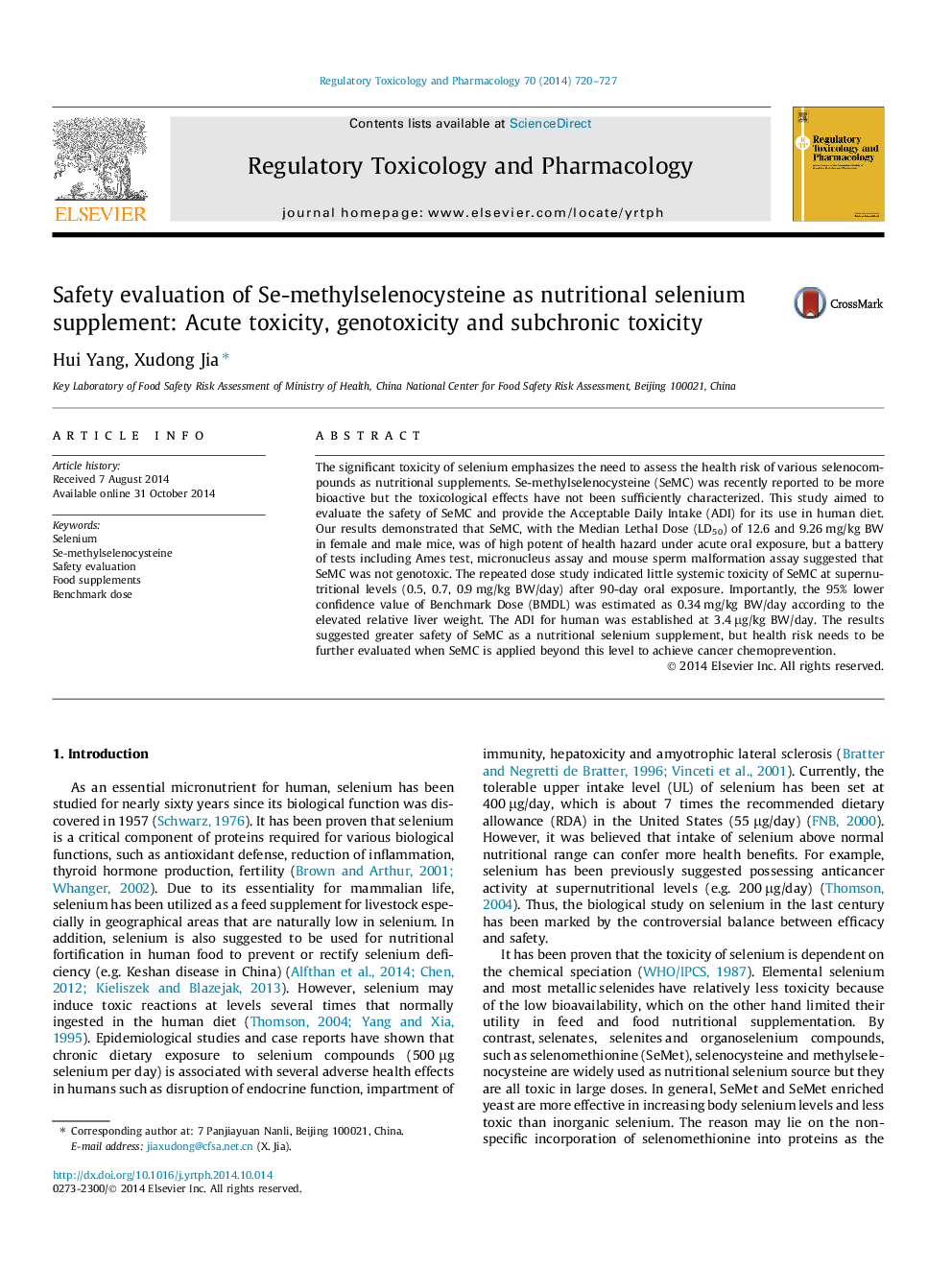| Article ID | Journal | Published Year | Pages | File Type |
|---|---|---|---|---|
| 5856465 | Regulatory Toxicology and Pharmacology | 2014 | 8 Pages |
â¢Toxicological effects of Se-methylselenocysteine (SeMC) was comprehensively characterized.â¢SeMC exhibited relatively greater safety as a source for nutritional selenium supplement.â¢Benchmark dose-response modeling was utilized to estimate the reference dose.â¢The 95% lower confidence value of The Benchmark Dose (BMDL) was estimated as 0.34 mg/kg BW/day according to the elevated relative liver weight in rats.â¢The Acceptable Daily Intake (ADI) for SeMC use in human diet was estimated at 3.4 μg/kg BW/day.
The significant toxicity of selenium emphasizes the need to assess the health risk of various selenocompounds as nutritional supplements. Se-methylselenocysteine (SeMC) was recently reported to be more bioactive but the toxicological effects have not been sufficiently characterized. This study aimed to evaluate the safety of SeMC and provide the Acceptable Daily Intake (ADI) for its use in human diet. Our results demonstrated that SeMC, with the Median Lethal Dose (LD50) of 12.6 and 9.26 mg/kg BW in female and male mice, was of high potent of health hazard under acute oral exposure, but a battery of tests including Ames test, micronucleus assay and mouse sperm malformation assay suggested that SeMC was not genotoxic. The repeated dose study indicated little systemic toxicity of SeMC at supernutritional levels (0.5, 0.7, 0.9 mg/kg BW/day) after 90-day oral exposure. Importantly, the 95% lower confidence value of Benchmark Dose (BMDL) was estimated as 0.34 mg/kg BW/day according to the elevated relative liver weight. The ADI for human was established at 3.4 μg/kg BW/day. The results suggested greater safety of SeMC as a nutritional selenium supplement, but health risk needs to be further evaluated when SeMC is applied beyond this level to achieve cancer chemoprevention.
